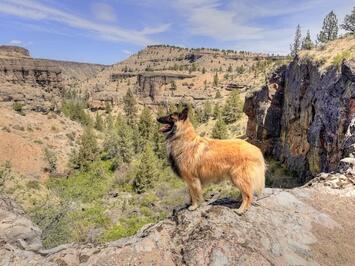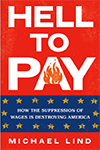
The federal government owns about 640 million acres of land — some 28 percent of the land area of the United States — but according to some press reports, members of the U.S. Senate are proposing to sell 250 million of those acres. The press reports are wrong, but even if they weren’t, I can’t help but feel schadenfreude at environment groups that are going ballistic at the proposal.
Federal land aficionados all agree that the lands are enormously valuable. Yet Congress has given away most of the resources produced by those lands, including minerals, forage for domestic livestock, recreation, and water, to various special interest groups for nothing or well below their true value. As result, federal taxpayers lose roughly $10 billion per year managing the federal lands.
The 1980s saw a movement to privatize national forests (about 193 million acres) and Bureau of Land Management (about 247 million acres) lands, but it never got very far. However, I examined the arguments made by the privatizers and realized they were hard to refute. The lands were poorly managed, they said, and almost any environmentalist would agree. The politicization of federal lands meant that people fought over them rather than cooperated with one another to see that they were used for their highest values. Federal land mismanagement had bad influences on adjacent private lands. Privatization could have solved many of these problems.
Maybe I’m selfish, but I never supported privatization because I liked the idea of being able to freely travel across and through large scenic areas. However, data published by the Forest Service revealed that there were enough people like me that the most valuable use of about 98 to 99 percent of federal lands was for recreation, wildlife, and other so-called amenities, meaning things other than timber, grazing, and minerals. The remaining 1 or 2 percent included some Wyoming coal fields as well as oil & gas fields, which are distributed widely but can be extracted by occupying only a small amount of the surface.
Instead of privatization, I proposed marketization: letting federal land managers charge fair market value for all resources and funding those lands exclusively out of a share of those revenues. Managers would then have incentives to allocate the lands to their most valuable uses and competing user
My proposal was more complicated than that and eventually included a number of checks and balances aimed at protecting endangered species and other resources whose values might not be fully captured by the market. My original 1988 proposal gained some traction within the environmental movement until the fall of the Soviet Union, when the movement was taken over by people who wanted to control public lands from the top down.
Read the rest of this piece at The Antiplanner.
Randal O'Toole, the Antiplanner, is a policy analyst with nearly 50 years of experience reviewing transportation and land-use plans and the author of The Best-Laid Plans: How Government Planning Harms Your Quality of Life, Your Pocketbook, and Your Future.
Photo: Grizzly getting a good look at some of the nation’s federal lands. (As it happens, since I took this photo a week ago, this land has been burned in a wildfire. Although the Forest Service has concluded the fire was human-caused, we didn’t do it unless the zooming of a one-year-old dog was enough to ignite the grass.) Courtesy the Antiplanner.












